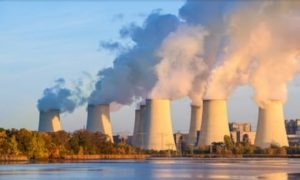Thermal Pollution
Thermal pollution, sometimes called “thermal enrichment,” is the degradation of water quality by any process that changes ambient water temperature. Thermal pollution is the rise or fall in the temperature of a natural body of water caused by the human influences. Thermal pollution, unlike chemical pollution, results in a changes in the physical properties of water.
The Main Cause of Thermal Pollution
Many humans and natural factors contribute to the problem of thermal Pollution. The single biggest causes of thermal pollution are probably cooling for industrial machinery and power plants. Water is the excellent cooling agent. This is why many industrial operations pull in relatively cool water to cool their machinery and let the relatively warm water flow back into the river, lake or sea.
Sources of Thermal Power Plant
- Nuclear Power Plant
- Coal-fired power Plant
- Industrial Effluents
- Domestic Sewage
- Hydro-electric power
- Thermal Power Plant
It can be occurring from water being pulled and released from natural water bodies. In the most cases, the water temperature is increased. However, a distinctive form of thermal pollution involves cold water being released into natural water bodies from storage reservoirs.
Causes
- Use of water as a cooling agent in industrial plants
- Soil erosion
- Runoff from paved surfaces
- Natural causes
- Deforestation
The effects of thermal pollution may start with a decrease in dissolved oxygen that affects the aquatic life, but it’s likely that the damage won’t stop there. In addition to killing fish and other animals, thermal pollution can be cause organisms to consume more food than they usually consume. As a result of the food chain also may be disrupted. The food chain may also be disrupted by species migrating to environments that can be sustain their survival.
Control Steps
- Cooling Towers – Cooling towers can regulate the water temperature very well by transferring heat from hot water to…
- Cooling Ponds – Cooling ponds or reservoirs are the most widely used technique for Substantial temperature reductions.
- Spray Ponds – In spray ponds, the water coming out from the condensers pass into the pond through water sprayer.
- Other Preventive Measures also control Thermal Pollution.
Prevention
- Heat water from the industries can treated before discharging directly to the water bodies.
- Heat water from the industries can be treated by the installation of cooling ponds and cooling towers.
- Industrial treated water can be recycled for domestic use or industrial heating.
- Through artificial lakes – In this lake Industries can be discharge their used or heated water at one end and water for cooling purposes may be withdrawn from the other end. The heat is eventually dissipated through evaporation.
Co-generation
Co-generation is also a wonderful idea to combat thermal pollution. In this process of co-generation, the useless heat from hot water can be recycled and used smartly in many tasks by industries.
Thermal pollution is a dangerous threat to our planet earth. If we do not start taking precautions for the same now, the problem will keep on expanding, degrading the quality of water and adversely affecting the aquatic plants and animals.
In conclusion, thermal pollution has been devastating effects on marine life. Keeping marine life healthy is most important for the air we breathe and the world we live in. With water covering 70% of the Earth’s surface and being one of our most important natural resources, we must do everything we can to protect it. When it comes to thermal pollution, there are few ways one individual can be really reducing their contribution. As for a power plants and big industrial sites, they can do much to reduce thermal pollution. As a contributing member of society, we should all have find ways to reduce our carbon footprint.


